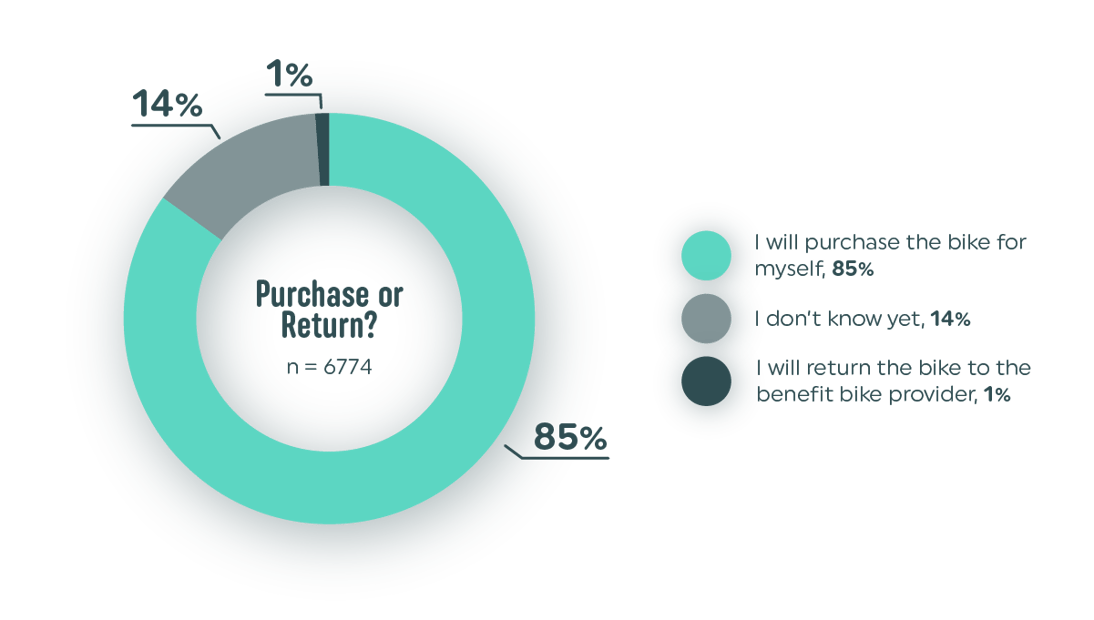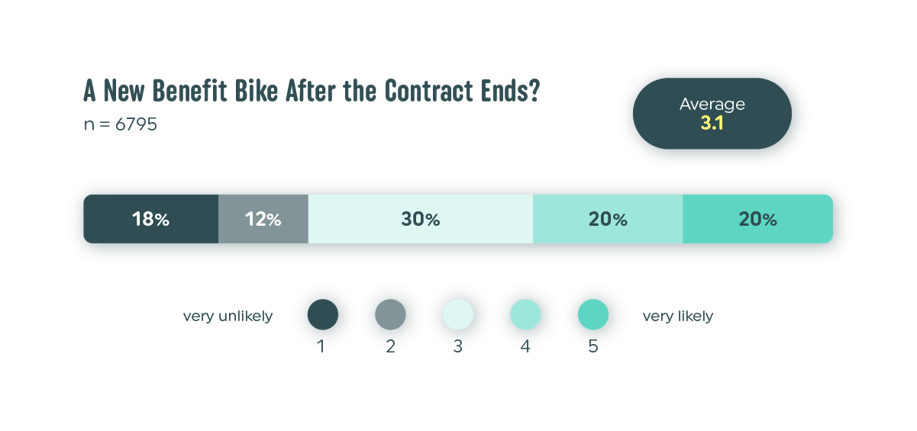The bicycle acquired through the cycle-to-work scheme is not the user's property during the agreement period – they only have the right to use it.
When the bike’s leasing agreement expires, the user faces a choice: either purchase the bicycle for a small residual value or return it to the cycle benefit company.
We asked respondents how they plan to proceed when their own agreements expire.
Note: The study was conducted in March 2025, before information about the government's plans to eliminate the tax benefit for employer-provided bicycles became public. If the tax benefit is indeed removed, it will naturally affect many benefit bike users' plans regarding both their current and potential new employer-provided bicycles.

The outcome seems clear: a full 85% say they intend to purchase the bicycle for themselves when the agreement expires. Of the respondents, 14% have not yet made their decision, and a mere 1% already know they will return the bicycle.
"The purchase price in most of our agreements is so low that returning the bicycle at the end of the contract makes little economic sense," admits XXX from Vapaus.
Vapaus's Precycled shop sells used company bicycles and is the largest of its kind in the Nordic countries. Where do the bicycles even come from if only a fraction of users return their bicycles after the contract period?
"The majority of returned bicycles come to us when the agreement terminates mid-season, for example when employment ends. In such cases, there might be years left in the contract period, which would make the purchase price considerably higher than at the end of the agreement. In these cases, returning the bicycle to us for a fixed cost of a few hundred euros might be more appealing," XXX explains.
Some also exchange their bicycles for different ones during the contract period, at which point the old bicycle returns to circulation.
Of this survey's respondents, 95% are on their first employer-provided bicycle, but 5% of respondents are already on at least their second cycle. Among the respondents, there are even two cyclists who are on at least their fourth employer-provided bicycle!
A New (Benefit) Bike?
We also asked how likely respondents are to take a new benefit bike within about a year after their current agreement ends. For this question too, it's worth noting that the survey data was collected before information about the government's plans to cut the cycle benefit became public.
The responses were very evenly distributed, with an average of 3.1 (on a scale of 1-5).

Men were more likely than women to plan on acquiring a new benefit bike soon after their current one (average 3.3 vs 2.9). Lifestyle cyclists are in a league of their own – their average is as high as 3.59.

















 The study did not ask about the respondent's benefit bike brand, but we dug up information about favourites from Vapaus's database of over 20,000 active bike contracts.
The study did not ask about the respondent's benefit bike brand, but we dug up information about favourites from Vapaus's database of over 20,000 active bike contracts.














